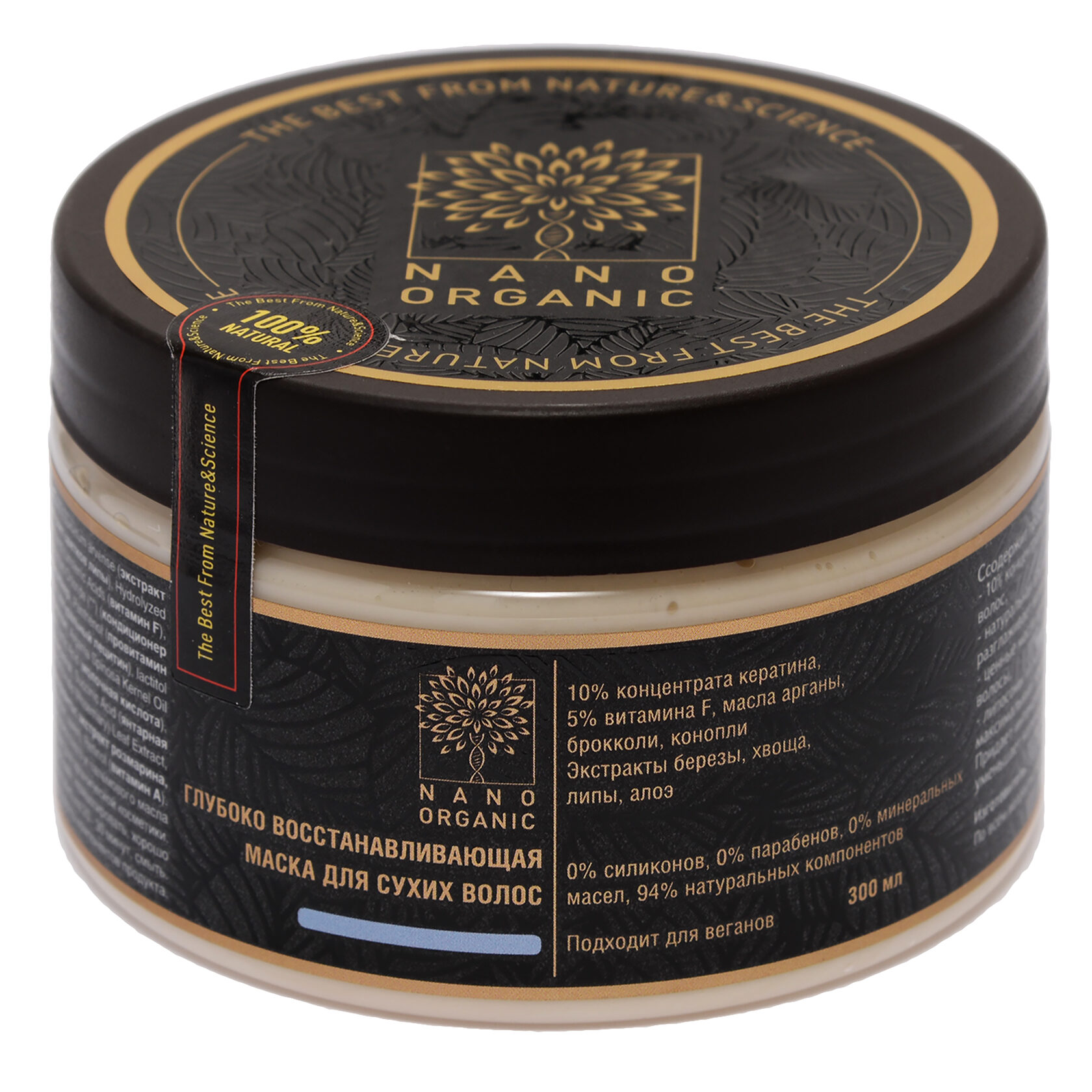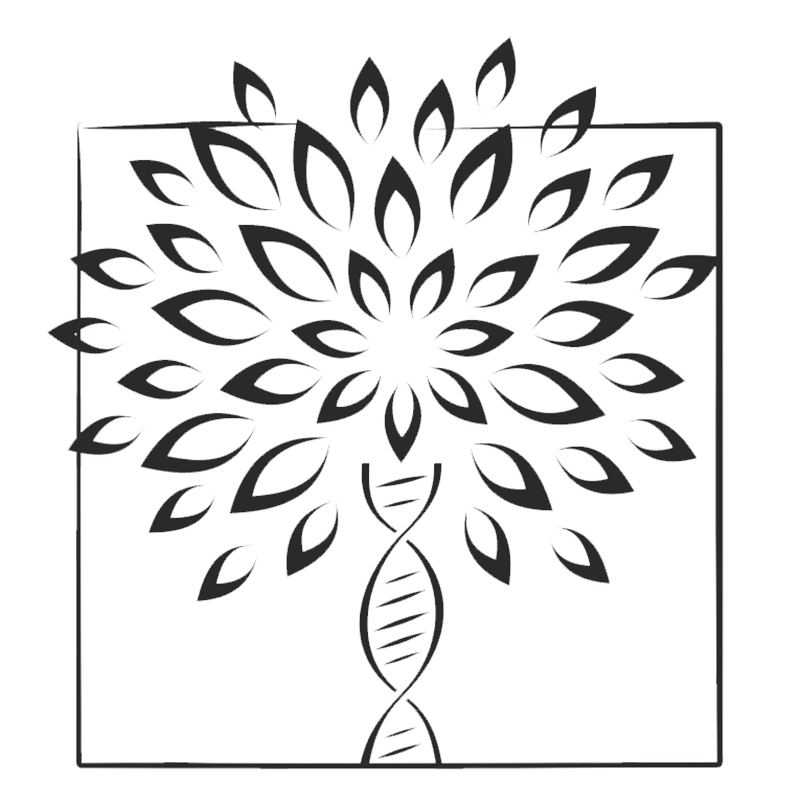
NanoOrganic
manager@naturcosmet.ru
+7 (915) 330-35-96
+7 (915) 330-35-96
Глубоко восстанавливающая маска
Интенсивный уход для сухих волос без силиконов. Разглаживает, защищает кутикулу от повреждений, придает яркий блеск и упругость
Содержит профессиональные концентрации активов: 10% концентрата кератина (2% по сухому белку) реставрируют поврежденные участки волос.
Содержит профессиональные концентрации активов: 10% концентрата кератина (2% по сухому белку) реставрируют поврежденные участки волос.
для сухих волос

Комплекс витамина F (5%) и коньячной камеди
разглаживает волосы, придавая сияющий блеск и облегчая расчесывание.
Масла арганы, брокколи, конопли и витамины А, Е, С, B5
интенсивно питают волосы
Липосомы из натурального лецитина
усиливают проникновение активов, обеспечивая максимальный эффект. Придает интенсивный блеск, увлажняет, уплотняет и разглаживает волосы, уменьшает количество посеченных кончиков волос, придает упругость локонам
Состав
manager@naturcosmet.ru
+7 (915) 330-35-96
+7 (915) 330-35-96
Состав
вода очищенная (Aqua); экстракт листа березы (Betula Alba Leaf Extract), экстракт хвоща полевого (Equisetum Arvense Extract), экстракт алоэ (Aloe Barbadensis (Aloe Vera) Leaf Extract), экстракт цветков липы (Tilia Cordata Flower Extract); фитокератин (Hydrolyzed Soy and Rice Protein); витамин F (Linoleic, Linolenic Acids); цетеариловый спирт* (Cetearyl Alcohol); кондиционер растительного происхождения* (Distearoylethul Dimonium Chloride, Cetearyl Alcohol); антистатик, кондиционер* (Behentrimonium Chloride); провитамин В5 (Panthenol); коньячная камедь (Amorphophallus Konjac Root Powder); натуральный лецитин (Lecithin); пребиотик (Sorbitol); масло конопли (Cannabis Sativa/Hemp Seed Oil); масло арганы (Argania Spinosa Kernel Oil); масло брокколи (Brassica Oleracea Italica (Broccoli) Seed Oil); молочная кислота (Lactic Acid); натуральный витамин Е (Tocopherols Blend); лимонная кислота (Citric Acid); янтарная кислота (Succinic Acid); витамин С (L-ascorbic Acid); натуральные консерванты: экстракт розмарина, Nipaguard SCE* (Natural Preservatives: Rosmarinus Officinalis (Rosemary) Leaf Extract, Nipaguard SCE (Sorbitan Caprylate, Propanediol, Benzoic Acid); натуральные пищевые ароматизаторы: персик, дыня (Natural Fragrances: Peach, Melon); витамин А (Retinol).
(*) разрешены европейскими системами экосертификации для органической косметики
(*) разрешены европейскими системами экосертификации для органической косметики
Разбор состава
Способ применения
Нанести маску на чистые влажные волосы, как минимум, на 5 минут, помассировать, хорошо смыть водой. Для интенсивного восстановления – обернуть пленкой и оставить на 20 – 30 минут, смыть.
Внимание! Возможна индивидуальная непереносимость компонентов
Внимание! Возможна индивидуальная непереносимость компонентов
Рекомендации
Наука
Исследования
Ниже можно посмотреть некоторые научные статьи, подтверждающие эффективность используемых активов. Слово "Источник" является активной ссылкой, перенаправляющей на первоисточник на платформе PubMed (общемировая платформа научных статей по медицине, биохимии, биологии) или других научных ресурсах.
Мурашкин Н. Н. и др. Инновации в терапии атопического дерматита, осложненного вторичной инфекцией //Педиатрическая фармакология. – 2018. – Т. 15. – №. 4.
Yang M., Zhou M., Song L. A review of fatty acids influencing skin condition //Journal of cosmetic dermatology. – 2020. – Т. 19. – №. 12. – С. 3199-3204.
Spagnol C. M. et al. Ascorbic acid in cosmetic formulations: Stability, in vitro release, and permeation using a rapid, inexpensive, and simple method //Journal of Dispersion Science and Technology. – 2017. – Т. 38. – №. 6. – С. 901-908.
Ravetti S. et al. Ascorbic acid in skin health //Cosmetics. – 2019. – Т. 6. – №. 4. – С. 58.
Ehrlich M. et al. Improvement in the Appearance of Wrinkles with Topical Transforming Growth Factor β1 and l‐Ascorbic Acid //Dermatologic surgery. – 2006. – Т. 32. – №. 5. – С. 618-625.
Trommer H. et al. Role of ascorbic acid in stratum corneum lipid models exposed to UV irradiation //Pharmaceutical research. – 2002. – Т. 19. – №. 7. – С. 982-990.
Kim S., Lee T. G. Stabilization of l-ascorbic acid in cosmetic emulsions //Journal of industrial and engineering chemistry. – 2018. – Т. 57. – С. 193-198.
Raschke T. et al. Topical activity of ascorbic acid: from in vitro optimization to in vivo efficacy //Skin pharmacology and physiology. – 2004. – Т. 17. – №. 4. – С. 200-206.
Stettler H. et al. A new topical panthenol-containing emollient: Results from two randomized controlled studies assessing its skin moisturization and barrier restoration potential, and the effect on skin microflora
Journal of Dermatological Treatment. – 2017. – Т. 28. – №. 2. – С. 173-180.
Journal of Dermatological Treatment. – 2017. – Т. 28. – №. 2. – С. 173-180.
Bissett D. L. Common cosmeceuticals
Clinics in dermatology. – 2009. – Т. 27. – №. 5. – С. 435-445.
Clinics in dermatology. – 2009. – Т. 27. – №. 5. – С. 435-445.
Pavlačková J. et al. In vivo efficacy and properties of semisolid formulations containing panthenol
Journal of cosmetic dermatology. – 2019. – Т. 18. – №. 1. – С. 346-354.
Journal of cosmetic dermatology. – 2019. – Т. 18. – №. 1. – С. 346-354.
Yoshioka A. et al. Anti-oxidant effects of retinoids on inflammatory skin diseases //Archives of dermatological research. – 1986. – Т. 278. – №. 3. – С. 177-183.
Zasada M., Budzisz E. Retinoids: Active molecules influencing skin structure formation in cosmetic and dermatological treatments //Advances in Dermatology and Allergology/Postȩpy Dermatologii i Alergologii. – 2019. – Т. 36. – №. 4. – С. 392.
Słoczyńska K. et al. Skin metabolism established with the use of MetaSite for selected retinoids employed in topical and systemic treatment of various skin disorders and found in cosmeceuticals //Acta Biochimica Polonica. – 2015. – Т. 62. – №. 2.
Ramos-e-Silva M. et al. Anti-aging cosmetics: Facts and controversies //Clinics in dermatology. – 2013. – Т. 31. – №. 6. – С. 750-758.
Packer L., Valacchi G. Antioxidants and the response of skin to oxidative stress: vitamin E as a key indicator //Skin Pharmacology and Physiology. – 2002. – Т. 15. – №. 5. – С. 282-290.
Nachbar F., Korting H. C. The role of vitamin E in normal and damaged skin //Journal of Molecular Medicine. – 1995. – Т. 73. – №. 1. – С. 7-17.
Thiele J. J., Ekanayake-Mudiyanselage S. Vitamin E in human skin: organ-specific physiology and considerations for its use in dermatology //Molecular aspects of medicine. – 2007. – Т. 28. – №. 5-6. – С. 646-667.
El Abbassi A. et al. Physicochemical characteristics, nutritional properties, and health benefits of argan oil: A review //Critical reviews in food science and nutrition. – 2014. – Т. 54. – №. 11. – С. 1401-1414.
El Abbassi A. et al. Physicochemical characteristics, nutritional properties, and health benefits of argan oil: A review //Critical reviews in food science and nutrition. – 2014. – Т. 54. – №. 11. – С. 1401-1414.
Femenia A. High-value co-products from plant foods: cosmetics and pharmaceuticals //Handbook of waste management and co-product recovery in food processing. – Woodhead Publishing, 2007. – С. 470-501.
Johnson Jr W. et al. Safety Assessment of Lecithin and Other Phosphoglycerides as Used in Cosmetics //International journal of toxicology. – 2020. – Т. 39. – №. 2_suppl. – С. 5S-25S.
Pavlačková J. et al. Stability and in vivo efficiency of natural cosmetic emulsion systems with the addition of vegetable oils //Brazilian Journal of Pharmaceutical Sciences. – 2018. – Т. 54.
